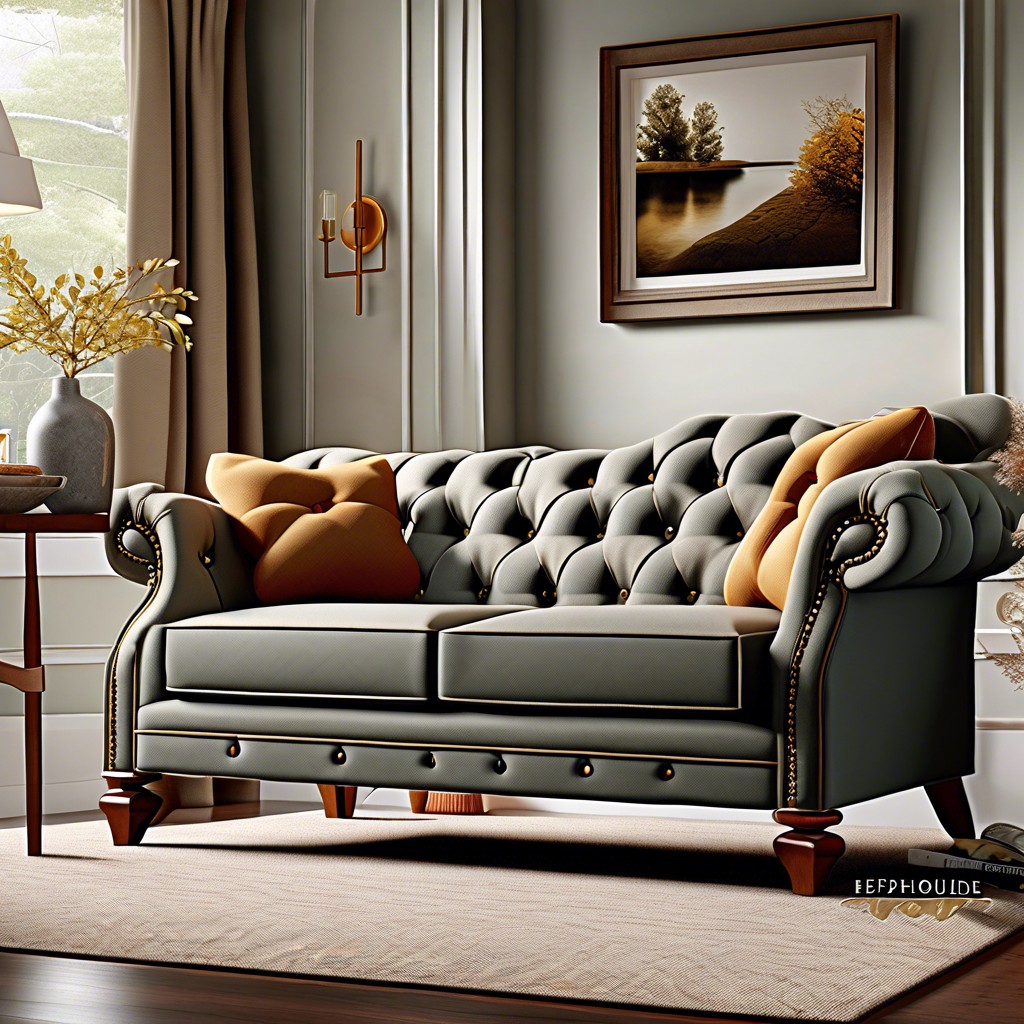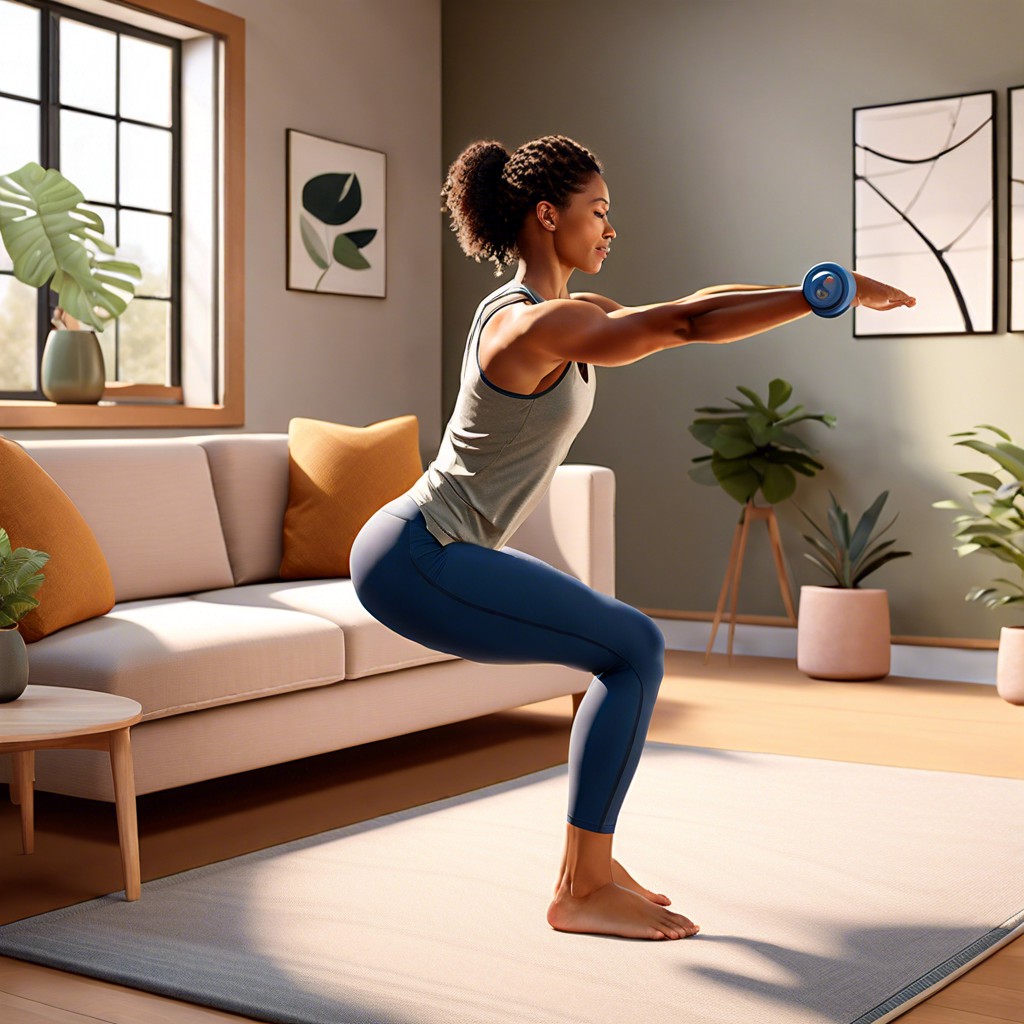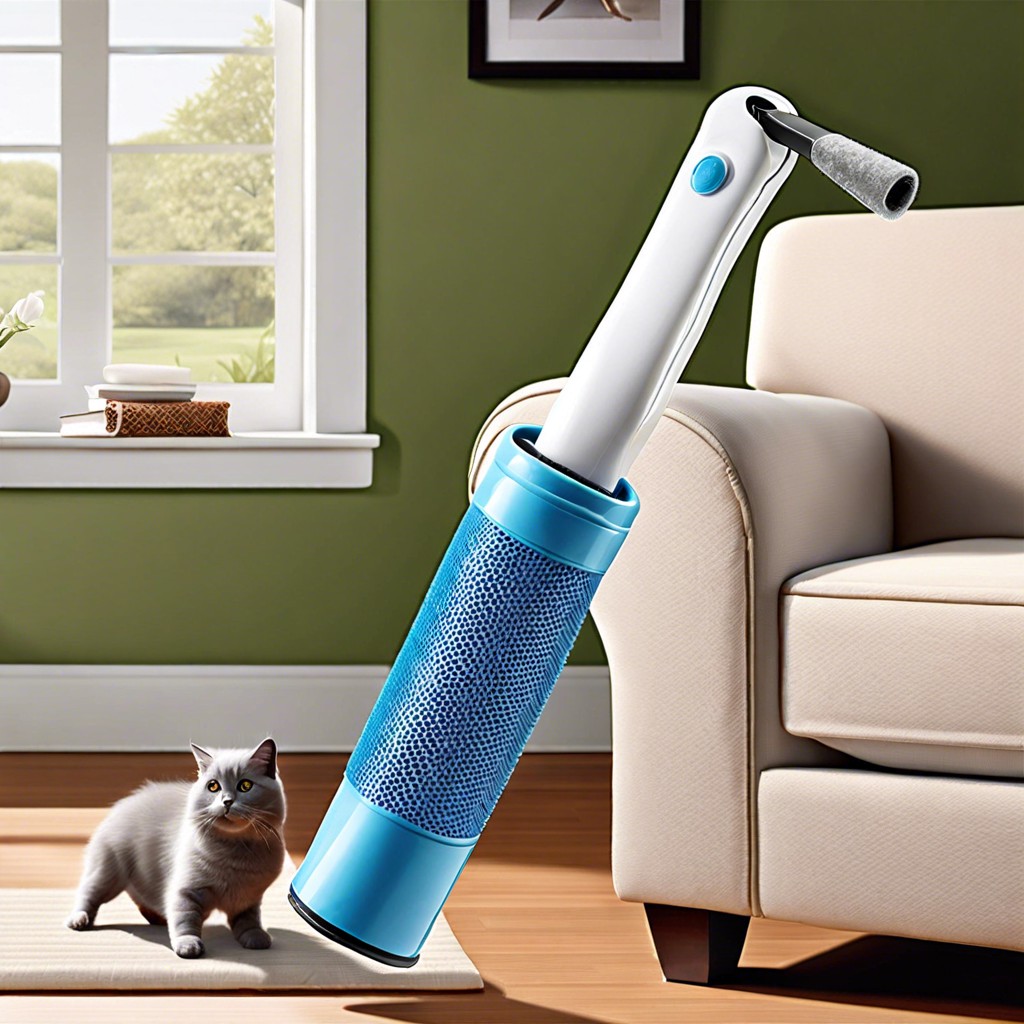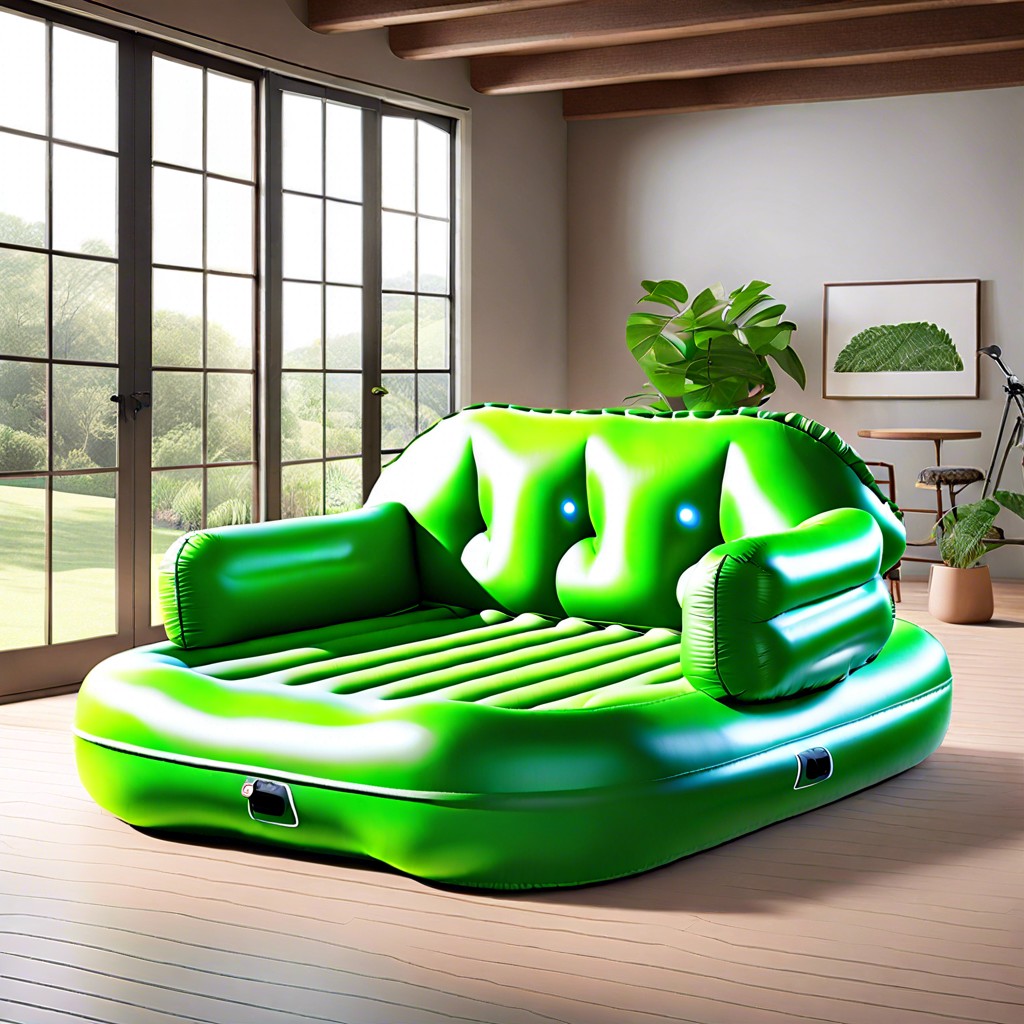Last updated on
This article covers the factors impacting a couch’s lifespan and guides you through ways to maximize its longevity.
Key takeaways:
- Couches typically last 7-15 years, depending on use and care.
- High-quality sofas with sturdy frames and foam last longer.
- Factors like usage, maintenance, and placement affect couch longevity.
- Different materials have varying levels of durability.
- Signs of wear include sagging, fading, tears, creaking, and odors.
Table of Contents
Average Lifespan of Couches
Generally, a well-made sofa can serve your living space comfortably for about 7 to 15 years. The range accounts for variables such as frequency of use, the number of people and pets in the household, and the level of care provided.
In households with children and pets, the lifespan might lean towards the lower end, as couches endure more spills, scratches, and jumps. On the other hand, a couch in a formal living room that sees occasional use can remain in prime condition well beyond a decade.
High-quality sofas with sturdy frames, high-density foam, and durable fabric or leather can outlast others. It’s not just the build but also lifestyle and maintenance that dictate the life expectancy of a couch.
Periodic cleaning and cushion rotation can extend the vitality of your sofa, keeping it comfortable and aesthetically pleasing for years.
Factors Affecting Couch Longevity
The lifespan of a couch is influenced by several key factors. Usage impacts longevity significantly; frequently used couches wear out faster. The weight of the users also plays a role, with heavier use leading to accelerated wear and tear.
Maintenance habits are crucial—regular cleaning and prompt stain removal help preserve appearance and structure. Placement within the home can affect durability; direct sunlight can fade fabrics, while close proximity to heat sources may cause drying and cracking. Quality of construction and materials are determining factors; a solid wood frame and high-density foam last longer than particleboard and low-density foam.
Lastly, lifestyle changes, such as moving homes or changes in personal taste, may shorten the functional period of a couch before it physically wears out.
Types of Couch Materials and Durability
Different materials offer varying degrees of durability which can significantly impact the lifespan of a couch:
- Leather: High durability, can last up to 15 years with proper maintenance. It’s resistant to spills and cracks with age, developing a patina that can be aesthetically pleasing.
- Microfiber: A synthetic fabric known for its durability and stain resistance. Suitable for homes with pets and children, it can often last more than 10 years.
- Cotton and Linen: These natural fabrics are less durable than leather or microfiber, potentially showing wear within 5-7 years. They’re comfortable but more susceptible to stains and require professional cleaning.
- Velvet: Offers a luxurious feel but can be delicate. Durability varies with the type of velvet; synthetic versions tend to be more durable than pure cotton or silk velvet.
- Synthetic Blends: Often a mix of materials like polyester and nylon, these blends are engineered for durability and can be a cost-effective option lasting 7-10 years.
Periodic treatment and careful usage are necessary to extend the life of whichever material is chosen.
Signs of Couch Wear and Replacement
Sagging seats can indicate that the couch’s springs are wearing out or the foam is losing its resilience, compromising comfort and support.
Faded fabric from sunlight exposure or frequent use shows not only age but may also weaken the material, making it more prone to tears.
Visible wear and tear, such as rips, holes, or fraying, can reduce the aesthetic appeal of a couch and may be irreparable, calling for replacement.
Persistent creaking or noises when sitting or moving on the couch suggest structural issues that can affect both comfort and safety.
A musty or stale odor that persists even after cleaning could be a sign of mold, mildew, or deeply embedded stains, which can be health hazards.
When the overall style of the couch appears outdated and doesn’t fit with current decor or lifestyle needs, a new couch can refresh the space.
If cushions no longer provide adequate support and are difficult to refluff or have permanent indentations, comfort is likely compromised.
Allergic reactions or increased symptoms for those with allergies might be due to allergens and dust mites accumulated in the couch over time.
When to Consider a New Couch
If you notice pronounced sagging in the cushions or frame, it indicates a breakdown in support structures—a sure sign that comfort is compromised. When the upholstery fabric wears thin or displays stubborn stains that defy cleaning, aesthetics and hygiene call for an update.
Persistent squeaks and creaks might reveal weakening joints, a concern for safety and noise. Additionally, a change in lifestyle, such as a move to a new home or an increasing family, often warrants a couch that suits your evolving space requirements and taste. Lastly, if you experience allergic reactions when lounging, consider that old couches can harbor allergens and replacing it could improve indoor air quality.
FAQ
How often should a couch be replaced?
A couch should typically be replaced every seven to 15 years, depending on its usage and maintenance.
How long should the average sofa last?
On average, a sofa should last between 7 to 15 years, depending on factors such as quality, usage frequency, and maintenance.
How do I know when to replace my sofa?
You should consider replacing your sofa when it starts to make creaking noises, feels unsteady, the cushions are flat or sagging, the upholstery is stained or torn, there’s a persistent unpleasant smell or if it’s simply outdated and uncomfortable.
What is the life expectancy of a fabric couch?
The average life expectancy of a quality fabric couch is between seven to fifteen years.
What are the signs of wear and tear to look out for in an aging couch?
Signs of wear and tear in an aging couch include discoloration, fraying, uneven surfaces, loose components, decreased padding, and creaking sounds when in use.
How does regular maintenance impact the lifespan of a sofa?
Regular maintenance, including professional cleaning and timely repairs, can significantly extend the lifespan of a sofa by preventing structural damage and fabric degradation.
Can the type of upholstery affect how long a couch lasts?
Yes, the type of upholstery significantly influences the lifespan of a couch.




